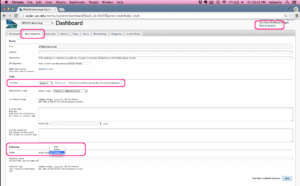In today’s digital age, sharing research, academic projects, or creative storytelling online is easier than ever. One such powerful platform is scalar.usc.edu, developed by the University of Southern California (USC). Scalar is a free, open-source authoring and publishing tool designed specifically for scholars, educators, and students who want to create digital books with rich media integration.
This beginner’s guide will help you understand how scalar.usc.edu works, what makes it different from other platforms, and how you can start publishing interactive digital content step by step. Whether you’re a student working on a thesis or a professor planning an online publication, this guide is your starting point.
What Is scalar.usc.edu?
scalar.usc.edu is an online publishing platform created by the Alliance for Networking Visual Culture. It allows users to create non-linear, media-rich scholarly publications.
Unlike traditional websites or blogs, Scalar is made for creating structured academic content with embedded images, videos, links, and metadata. It supports interactive storytelling and is ideal for digital humanities, media studies, and educational content.
Key Features of scalar.usc.edu
Here are the top features that make Scalar stand out:
-
Non-linear navigation: Readers can explore content through different paths.
-
Multimedia integration: Supports images, videos, audio, and maps.
-
Metadata support: Ideal for academic citation and indexing.
-
Collaborative writing: Multiple users can work on the same book.
-
Open access: All content can be freely accessed or restricted based on user preferences.
Who Can Use scalar.usc.edu?
Scalar is open to:
-
Students – for digital dissertations, research portfolios, and interactive essays.
-
Educators – to design engaging course content.
-
Researchers – for multimedia research papers or case studies.
-
Artists & Writers – for storytelling with media-rich elements.
No coding skills? No problem. Scalar doesn’t require HTML or CSS knowledge. If you can use a word processor, you can use Scalar.
How to Create an Account on scalar.usc.edu

To get started:
-
Click on “Request an account” if you’re new.
-
Enter your name, email address, and reason for using Scalar.
-
Once approved, you’ll receive login credentials.
Tip: Use your academic or institutional email for faster approval.
Getting Familiar with the Dashboard
Once logged in, you’ll see the Dashboard—your control center.
-
My Books: View all your Scalar projects.
-
New Book: Start a fresh publication.
-
Media: Manage images, videos, and audio files.
-
Content: Organize pages, metadata, and relationships.
Step-by-Step: How to Create a Book on scalar.usc.edu
Let’s walk you through the basic process:
Step 1: Start a New Book
-
Click on “Create New Book.”
-
Enter a Title, Description, and choose if it’s public or private.
Step 2: Add Pages
-
Click on “Add New Page.”
-
Name your page (e.g., “Introduction”).
-
Add your text, embed videos or images.
Step 3: Link Pages for Navigation
Scalar allows non-linear linking, which means you can guide readers through various content paths.
-
Use “Path” or “Tag” to connect pages.
-
Create visual paths using the Visualization tool.
Step 4: Add Media
You can upload files or use media from archives like:
-
YouTube
-
Vimeo
-
SoundCloud
-
Internet Archive
-
Omeka
Simply paste the media URL and insert it into your page.
Step 5: Add Metadata
Metadata helps organize content and makes it discoverable.
-
Add creator names, publication dates, license info, and descriptions.
Design and Layout Options
Scalar offers several layout themes. You can:
-
Use default templates for a clean look.
-
Customize headers, background colors, and fonts.
-
Embed visualizations like maps, timelines, and galleries.
Remember, Scalar prioritizes content structure over flashy design.
Collaborating with Others on scalar.usc.edu
Want to work as a team? Scalar makes it easy:
-
Go to Dashboard → Book Properties → Permissions.
-
Add collaborators with editor or viewer roles.
-
Multiple authors can edit simultaneously.
Perfect for group projects, co-authored papers, or classroom collaboration.
Publishing and Sharing Your Scalar Book
Once your book is ready:
-
Choose whether to make it public or keep it private.
-
Share the unique URL with readers.
-
Embed your Scalar project in blogs, institutional websites, or LMS platforms.
You can also export your work as PDF, ePub, or HTML for offline sharing.
Best Practices for Beginners
Here are some helpful tips:
-
Plan your structure before adding content.
-
Use short pages for better readability.
-
Embed media meaningfully, not just for decoration.
-
Keep navigation intuitive for your audience.
-
Backup your work regularly.
Common Issues and How to Fix Them

| Issue | Solution |
|---|---|
| Media not embedding | Check URL formatting and supported platforms |
| Pages not linked | Use “Path” or “Tag” tools to create connections |
| Slow loading | Compress large images and limit media per page |
| Lost formatting | Avoid copying directly from Word or PDFs |
Benefits of Using scalar.usc.edu
-
Academic credibility
-
Open-source and free
-
Supports multimedia-heavy research
-
No technical expertise needed
-
Used by major universities globally
Whether you’re creating a digital exhibition or a student portfolio, Scalar supports rich storytelling and structured thinking.
FAQs – Frequently Asked Questions
Q1: Is scalar.usc.edu free to use?
Yes, Scalar is completely free, especially for academic and educational use.
Q2: Can I use Scalar on mobile?
Yes, Scalar is mobile-responsive, though editing works better on a desktop or laptop.
Q3: Is my content private?
You can choose privacy settings—make your project public or restrict access.
Q4: Can I export my book from Scalar?
Yes, Scalar supports exports to PDF, ePub, and HTML formats.
Q5: Does Scalar support custom domains?
By default, no. But advanced users can host Scalar on their own servers.
Final Thoughts: Why Scalar Is Worth Your Time
If you’re looking to create interactive, media-rich, and scholarly content online without having to code—scalar.usc.edu is your best choice. It’s flexible, intuitive, and tailor-made for the academic world.
From storytelling to thesis projects, Scalar opens up possibilities that traditional platforms can’t match. Take your first step, experiment, and don’t be afraid to make mistakes—because the best way to learn Scalar is by using it.
So go ahead—start your Scalar book today and let your ideas come alive!

